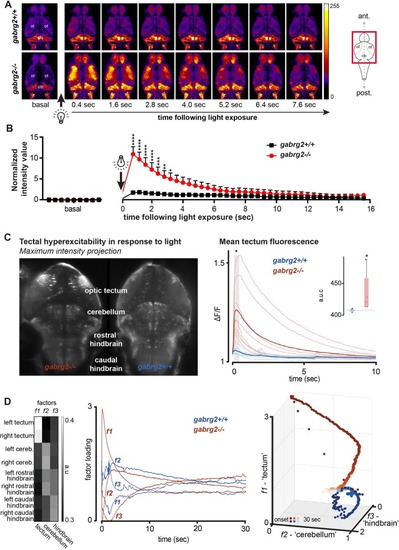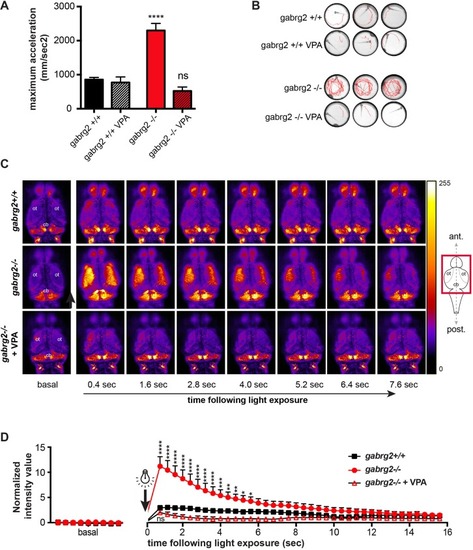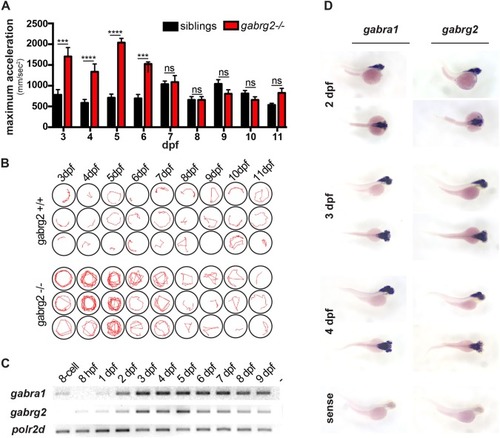- Title
-
Targeted knockout of GABA receptor gamma 2 subunit provokes transient light-induced reflex seizures in zebrafish larvae
- Authors
- Liao, M., Kundap, U., Rosch, R.E., Burrows, D.R.W., Meyer, M.P., Bencheikh, B.O.A., Cossette, P., Samarut, É.
- Source
- Full text @ Dis. Model. Mech.

ZFIN is incorporating published figure images and captions as part of an ongoing project. Figures from some publications have not yet been curated, or are not available for display because of copyright restrictions. PHENOTYPE:
|

ZFIN is incorporating published figure images and captions as part of an ongoing project. Figures from some publications have not yet been curated, or are not available for display because of copyright restrictions. PHENOTYPE:
|
|
|
|
|
|
PHENOTYPE:
|



